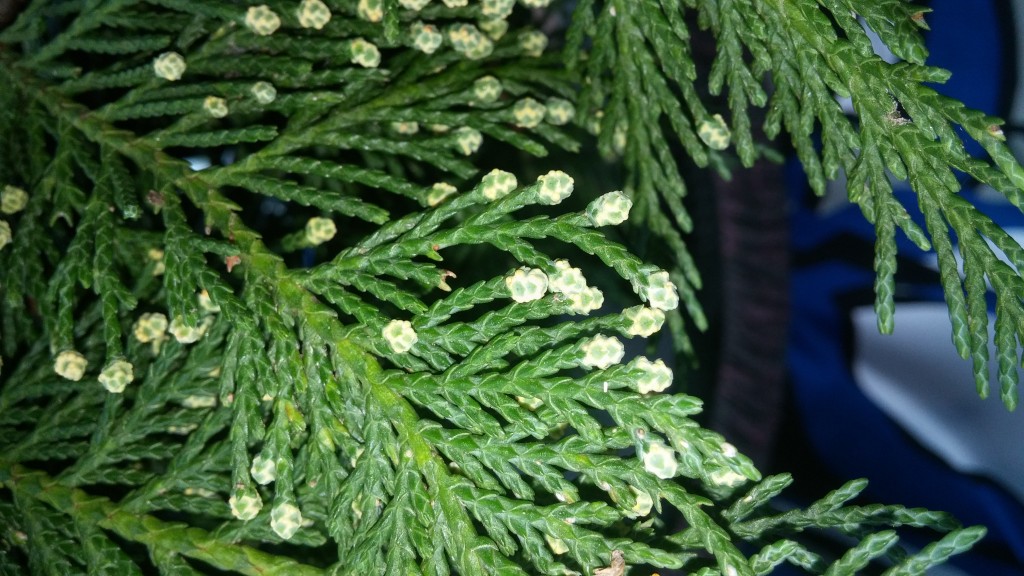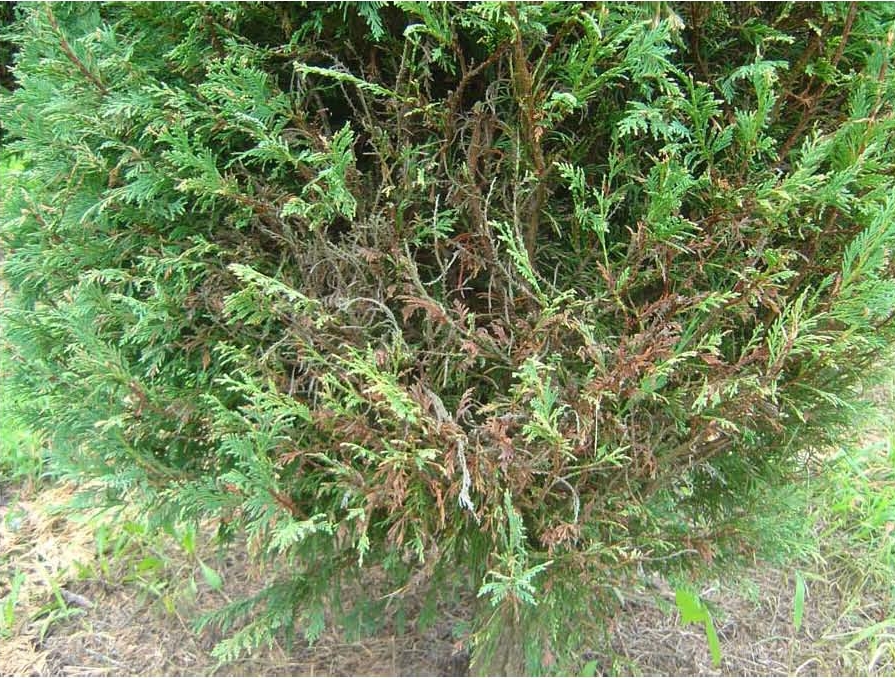
The models show that the seasonal shift to cooler fall temperatures, along with lower VPD and SolR, favour production and dispersal of P. Several people contacted me in November 2021 and sent pictures of the brown needles in their arborvitae and Leyland cypress. It was firstreported in 1887 on Sequoiadendron giganteum Sequoia gigantea (Lindl. Leahy2 INTRODUCTION: Cercosporidium blight is a serious disease on a wide range of coniferous plants (Table 1). A 10âday MA of avgT, vapour pressure deficit (VPD) and total solar radiation (SolR) had a positive quadratic, a negative linear and positive linear relationship, respectively, with conidia counts in the fall season. & Consumer ServicesDivision of Plant Industry Cercosporidium Blight of Leyland Cypress and Related Conifers1 Robert M. A threeâday moving average (MA) of average daily temperature (avgT) had a positive quadratic relationship with conidia counts in the summer season. Asperisporium sequioae (Ellis and Everh. Deterministic models were developed individually for summer (1 June to 30 September) and fall (1 October to 21 December) seasons. Passalora sequoiae (family Mycosphaerellaceae) causes a twig blight on Leyland cypress that requires numerous fungicide applications annually to minimize. Williams-Woodward University of Georgia, Department of Plant Pathology, Athens, GA 30602 Nature of Work: Needle blight, caused by Cercosporidium sequoiae (Ellis and Everh.) Baker and Partridge syn.

Canker causes extensive dieback and ultimately.

Its branches are flexible with dark green-gray needles and very little aroma an. However, gardeners who spot Cercospora needle blight (browning of the. Daily weather data summaries were obtained from a weather station at each location. In these areas, it is prone to develop cypress canker disease, which is caused by the fungus Seiridium cardinale. Leyland Cypress has a conical shape with excellent needle retention. For most cypress fungal diseases, fungicide will be ineffective. Peak conidia numbers were trapped in September and October. sequoiae were collected approximately weekly from June to December in 2001 in Watkinsville, GA, and in 2002 in Dearing, GA. There are over 20 common tree diseases that contribute to health decline and death of. Fungicide schedules have been developed in response to seasonal symptom progression and conidia dispersion without clarification of the influence of weather conditions on disease.

Needle blight disease, caused by Passalora sequoiae, results in a progressive loss of leaf tissue on Leyland cypress (Ã≼upressocyparis leylandii) within container and field tree nurseries, in the landscape and on Christmas tree farms.


 0 kommentar(er)
0 kommentar(er)
